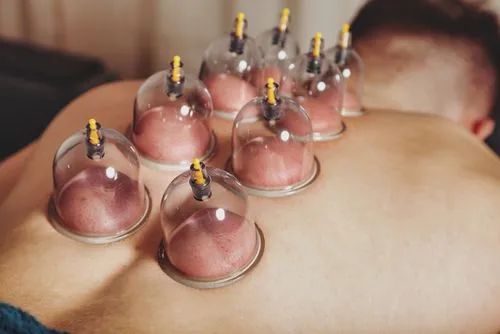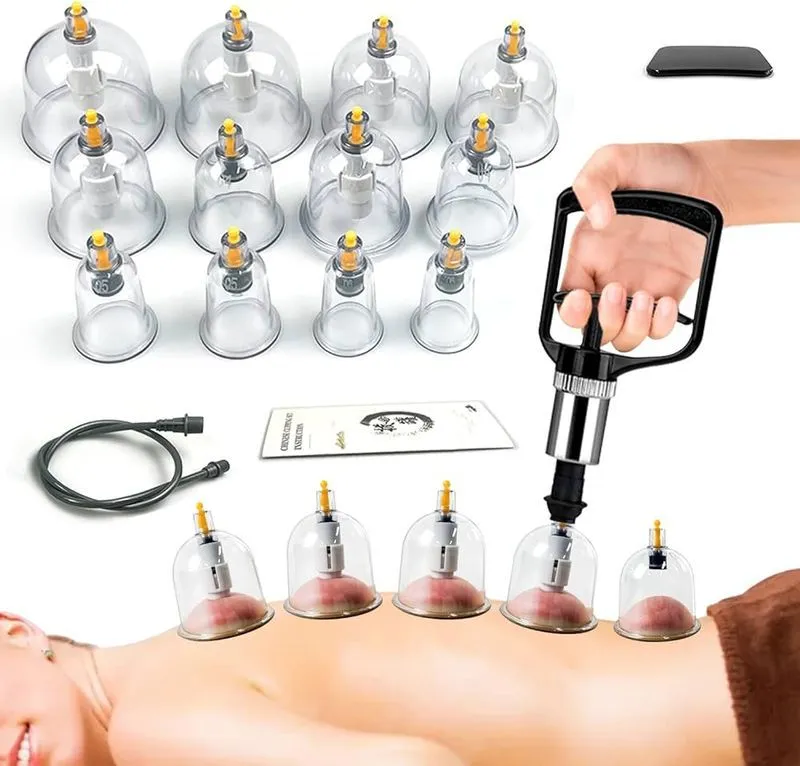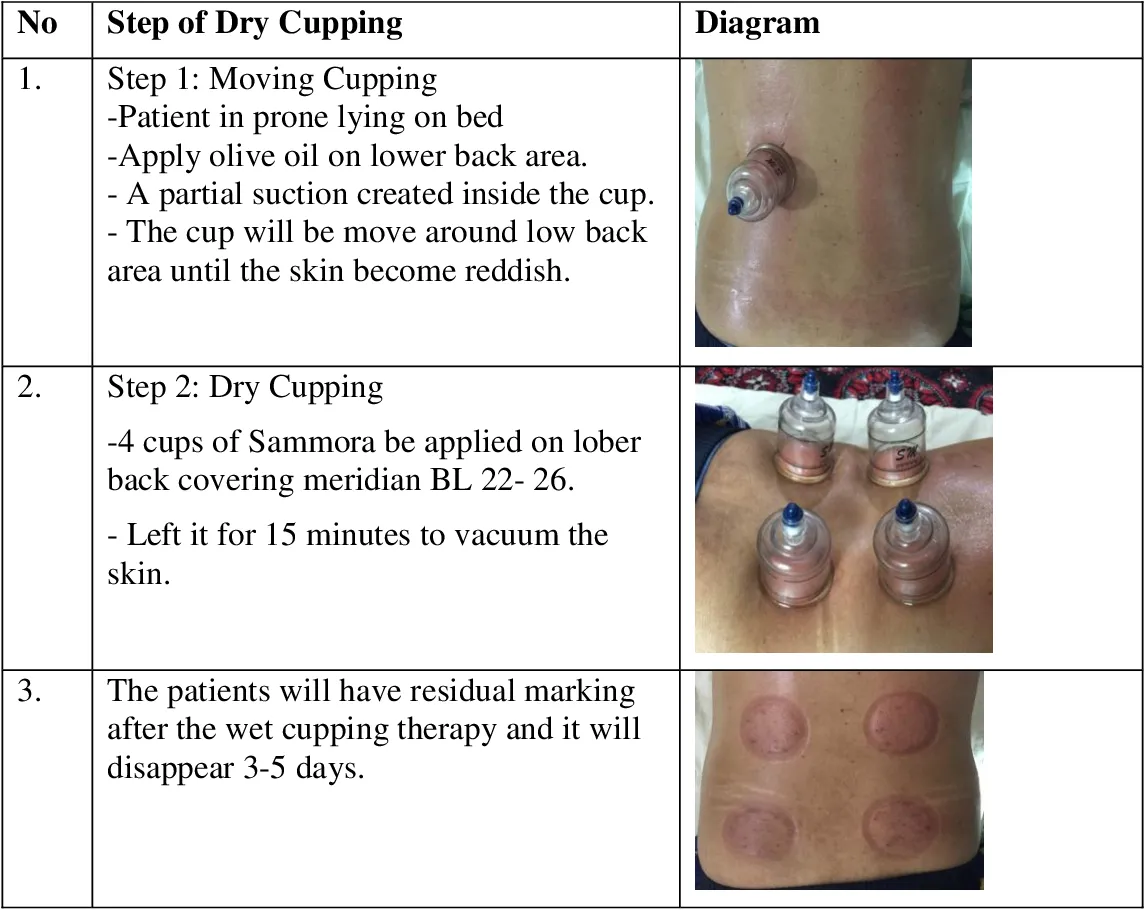
Cupping therapy has been gaining popularity as a natural and effective treatment for back pain relief. With its origins dating back to ancient Egyptian, Chinese, and Middle Eastern cultures, cupping therapy has stood the test of time and continues to be used in modern wellness practices. This holistic approach to healing involves the placement of cups on the skin to create suction, which is believed to improve blood flow, reduce muscle tension, and alleviate pain. The benefits of cupping therapy for back pain are supported by research studies and numerous patient testimonials, highlighting its potential as a complementary treatment option. As advancements in the field of alternative medicine continue to evolve, it is essential to understand the process, effectiveness, safety, and integration of cupping therapy with other modalities such as chiropractic care. In this blog, we will delve into the world of cupping therapy, debunk common myths and misconceptions, explore future trends, and provide valuable insights into choosing a qualified practitioner for personalized back pain relief. Whether you are new to cupping therapy or seeking to enhance your knowledge, this comprehensive guide will empower you to make informed decisions about your holistic wellness journey.

Cupping therapy has been used for centuries in various cultures, including traditional Chinese medicine and Middle Eastern practices. It involves creating suction on the skin to promote blood flow and relieve muscle tension. The origins of cupping therapy can be traced back to ancient Egyptian, Chinese, and Middle Eastern civilizations.
Cupping therapy is considered beneficial for back pain relief due to its ability to improve blood circulation, loosen tight muscles, and reduce inflammation. By targeting specific areas of discomfort with the suction cups, it is believed to release toxins from the body and stimulate healing. Many individuals report experiencing significant relief from chronic back pain after undergoing regular cupping therapy sessions.
There are different types of cupping techniques used for back pain relief, including dry cupping (also known as fire cupping) and wet cupping (or controlled bleeding). Dry cupping involves placing suction cups on the skin without making any incisions, while wet cupping includes a small puncture to draw out a small amount of blood. Both methods aim to alleviate back pain by improving circulation and reducing muscle tension.

Research studies have shown that cupping therapy can be effective in providing relief from back pain. In a study published in the Journal of Traditional and Complementary Medicine, researchers found that participants who received cupping therapy experienced significant improvements in their lower back pain compared to those who did not receive the treatment. This suggests that cupping therapy may be a valuable option for individuals seeking alternative treatments for chronic back pain.
Many patients have also reported positive outcomes from cupping therapy for their back pain. Testimonials indicate that the technique has helped alleviate symptoms such as muscle tension, stiffness, and limited range of motion. Some individuals even claim that regular sessions of cupping therapy have reduced the frequency and intensity of their back pain episodes, allowing them to engage in daily activities with greater ease.
When comparing cupping therapy with other conventional treatments for back pain, such as medication or physical therapy, it is important to consider individual preferences and responses to different interventions. While further research is needed to fully understand the mechanisms behind cupping therapy's effects on back pain relief, its potential benefits make it a promising avenue worth exploring for those struggling with persistent discomfort.
Preparation and consultation for cupping therapy is an essential step in ensuring the effectiveness of the treatment. Before the therapy session, a thorough assessment of the patient's back pain condition will be conducted by a qualified therapist. This may involve discussing medical history, previous treatments, and specific areas of concern to tailor the cupping therapy to individual needs.
The procedure and duration of cupping therapy can vary depending on the severity and type of back pain. The therapist will use specialized cups to create suction on specific points along the patient's back. This suction promotes blood flow to the affected area, which can help alleviate muscle tension and reduce inflammation. The duration of each cupping session may range from 10-15 minutes, with multiple sessions often recommended for optimal results.
Aftercare and follow-up are crucial aspects of cupping therapy for back pain relief. Patients may experience mild bruising or soreness at the cupping sites, which typically resolves within a few days. It is important to follow any post-treatment guidelines provided by your therapist, such as avoiding strenuous activities or applying soothing ointments as needed. Additionally, scheduling regular follow-up appointments can ensure that progress is being made towards long-term relief from chronic back pain.
When choosing a cupping therapy practitioner for back pain relief, it is crucial to look for qualifications and certifications. Ensure that the practitioner has received proper training in cupping therapy and holds relevant certifications from recognized institutions. This will ensure that they have the necessary knowledge and skills to provide effective treatment for your back pain.
In addition to qualifications, consider the experience and expertise of the practitioner in treating back pain with cupping therapy. Look for practitioners who have a proven track record of successfully treating back pain patients using cupping therapy techniques. A practitioner with extensive experience in this area is more likely to understand your specific needs and provide tailored treatment for optimal results.
Lastly, take into account client reviews and referrals when selecting a cupping therapy practitioner. Reading through testimonials from previous clients can give you valuable insights into the effectiveness of the practitioner's treatments for back pain relief. Additionally, seek referrals from trusted sources such as friends or family members who have had positive experiences with a particular cupping therapist.
When considering cupping therapy for back pain relief, it is essential to be aware of the potential risks and side effects associated with this treatment. Common side effects of cupping therapy may include temporary bruising, skin irritation, and mild discomfort. However, these effects typically subside within a few days following the treatment.
Individuals with certain medical conditions must exercise caution when undergoing cupping therapy. People with skin ulcers, edema, or those who are prone to easy bleeding should consult their healthcare provider before pursuing this treatment. Additionally, pregnant women should seek approval from their obstetrician before attempting cupping therapy due to the potential risks involved.
Regulations and standards for cupping therapy vary by location, so it's important to ensure that the practitioner performing the treatment is licensed or certified in their area. By adhering to established guidelines and seeking advice from a qualified healthcare professional beforehand, individuals can mitigate many of the potential risks associated with cupping therapy.
Cupping therapy and chiropractic care are two alternative treatment methods that have been found to complement each other effectively, especially in the case of back pain relief. The combination of these two therapies can offer holistic benefits by addressing both the muscular and skeletal components of back pain. Chiropractic adjustments focus on aligning the spine and relieving pressure on the nerves, while cupping therapy targets muscle tension and promotes blood flow to the affected area.
When integrated, cupping therapy can enhance the effects of chiropractic care by preparing the muscles for adjustments and promoting faster healing post-treatment. This collaboration between cupping therapy and chiropractic care allows for a more comprehensive approach to managing back pain, as it addresses not only spinal misalignments but also muscle tightness and inflammation. By incorporating both modalities into a treatment plan, patients may experience improved mobility, reduced discomfort, and overall better outcomes.
Incorporating cupping therapy with chiropractic care can provide patients with a well-rounded approach to managing chronic back pain or acute flare-ups. Together, these treatments promote relaxation, reduce muscle stiffness, improve circulation, and support structural realignment—all essential elements for achieving long-term relief from back pain. As such, many healthcare providers now offer combined treatment plans that leverage the synergistic benefits of both modalities for optimal results.
When considering cupping therapy for back pain relief, it is important to factor in the cost of the sessions. The affordability of cupping therapy can vary depending on the provider, location, and specific treatment plan. Some practitioners offer package deals or discounted rates for multiple sessions, so it's worth inquiring about any potential cost-saving options.
In terms of health insurance coverage, not all plans include cupping therapy as a reimbursable treatment. However, some policies do offer coverage for alternative or complementary therapies, including cupping. It's advisable to review your insurance policy or speak with a representative to determine if you have any coverage options for cupping therapy for back pain relief.
For individuals without insurance coverage or those seeking additional financial assistance, some providers may offer payment plans or sliding scale fees based on income. Additionally, there may be community organizations or grants that provide funding for holistic treatments such as cupping therapy. It's worthwhile to explore these avenues to make back pain treatment more accessible and affordable.
One common myth about cupping therapy is that it leaves permanent bruises on the skin. In reality, the marks left by cupping are not bruises but rather a result of the therapeutic process. These marks usually fade within a few days, and they are not painful.
Another misconception is that cupping therapy is only used for muscle relaxation and does not provide actual pain relief. However, many individuals have reported significant improvement in their back pain after receiving cupping therapy. The suction created by the cups helps to increase blood flow to the affected area, which can alleviate discomfort.
Finally, some people believe that cupping therapy is painful and uncomfortable. While it's true that the sensation of suction may take some getting used to, most patients find the treatment to be relaxing and soothing. It's important to consult with a qualified practitioner who can adjust the intensity of the suction according to your comfort level.
Innovations in cupping therapy techniques are expected to revolutionize the way back pain is treated. From the use of different cupping tools to novel application methods, therapists and researchers are constantly exploring new ways to maximize the benefits of this ancient practice. As a result, patients can look forward to more personalized and effective treatment options tailored to their specific needs.
Emerging research and advancements in cupping therapy for back pain relief show great promise for improving patient outcomes. Scientists are conducting studies to better understand the physiological mechanisms behind cupping's effects on back pain, leading to evidence-based protocols that enhance its efficacy. These developments not only contribute to a deeper understanding of how cupping works but also pave the way for more targeted and efficient treatments.
Integration with technology is another exciting trend shaping the future of cupping therapy for back pain relief. Innovations such as smart cups and app-controlled suction devices offer practitioners new ways to monitor progress, adjust treatment parameters, and optimize patient care. By leveraging these technological advancements, healthcare professionals can deliver more precise and consistent therapeutic interventions while empowering individuals with greater control over their healing journey.
At Prime Chiro, we understand the importance of finding the best chiropractor near you in Lansvale NSW and nearby areas of Fairfield, Liverpool, and Cabramatta. Our team of experienced professionals is dedicated to providing top-notch chiropractic care and consultation to individuals in need. Whether you're dealing with chronic pain, sports injuries, or simply looking to improve your overall wellness, Prime Chiro is here to help. Contact us today to schedule a consultation and take the first step towards a healthier, pain-free life. With our personalized approach and commitment to patient satisfaction, you can trust Prime Chiro to provide the care you deserve.
Cupping therapy is an ancient alternative medicine practice that involves placing cups on the skin to create suction. This suction helps to increase blood flow, reduce inflammation, and promote relaxation.
Cupping therapy can relieve back pain by improving blood circulation to the affected area, reducing muscle tension, and promoting the release of endorphins, which are natural painkillers.
Cupping therapy is generally considered safe when performed by a trained professional. However, it may cause temporary bruising, skin discolouration, or mild discomfort. It is important to consult with a healthcare provider before trying cupping therapy, especially if you have any underlying health conditions.
The duration of a cupping therapy session for back pain relief can vary depending on the individual and the severity of the pain. Generally, a session can last anywhere from 15 to 30 minutes.
The number of cupping therapy sessions needed for back pain relief can vary depending on the individual and the underlying cause of the pain. Some people may experience relief after just one session, while others may require multiple sessions over several weeks.
TL;DR: Cupping therapy is a traditional practice that can effectively relieve back pain. It involves various techniques and should be performed by a certified practitioner. It can be integrated with chiropractic care for holistic wellness and may be covered by health insurance. Debunking myths and misconceptions, the therapy is evolving with advancements and research for improved outcomes.